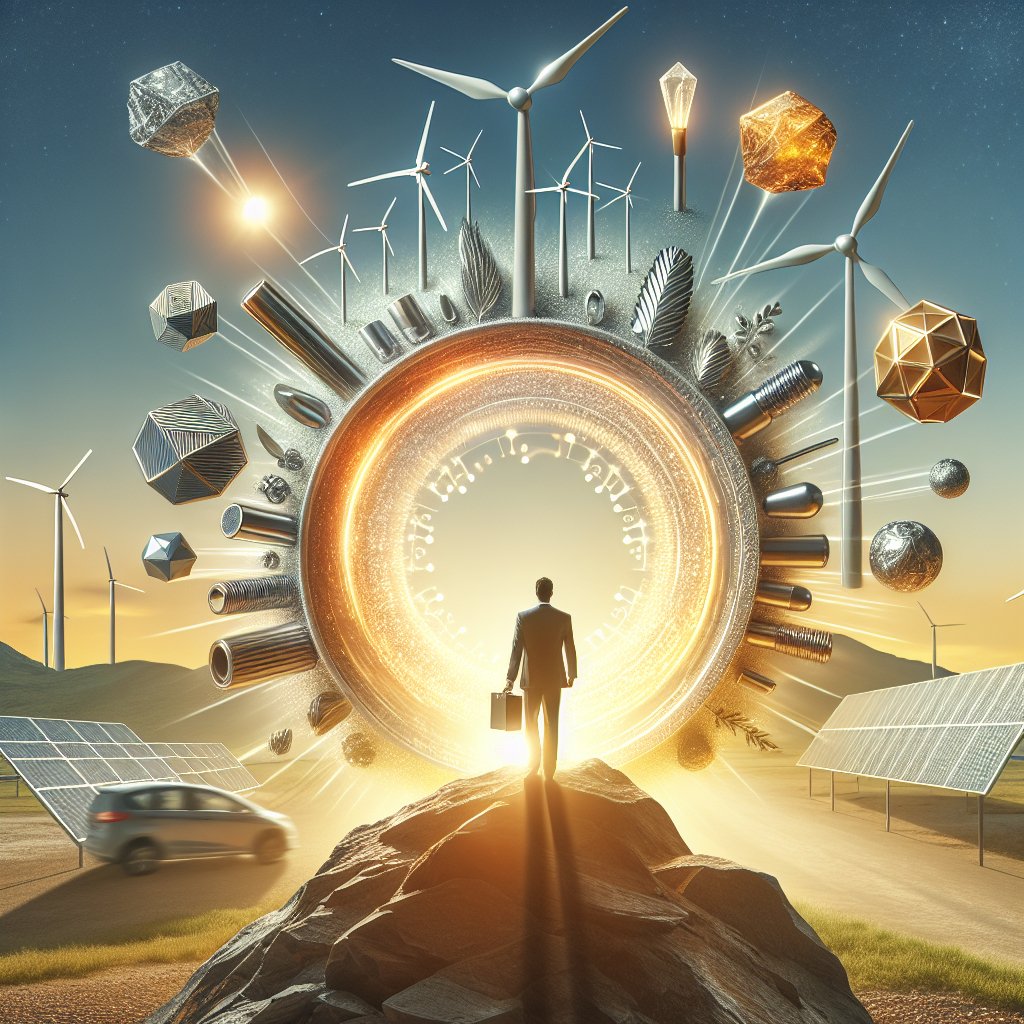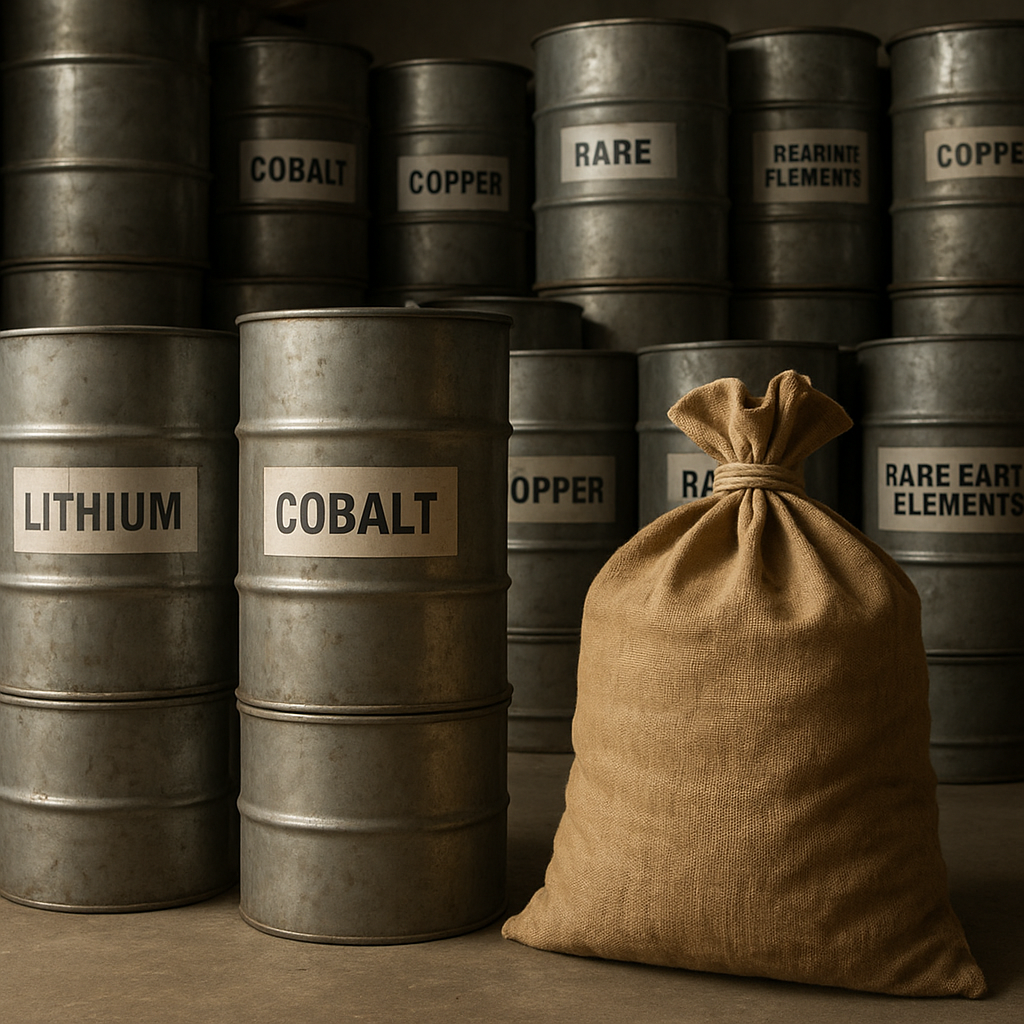The transition to a low-carbon economy is a critical global objective, and rare metals play a pivotal role in this transformation. As the world seeks to reduce its carbon footprint and mitigate the impacts of climate change, the demand for rare metals has surged. These metals are essential components in a variety of technologies that are central to achieving a sustainable future. From electric vehicles to renewable energy systems, rare metals are indispensable in the quest for a greener planet.
The Role of Rare Metals in Renewable Energy Technologies
Rare metals are integral to the development and deployment of renewable energy technologies. Elements such as neodymium, dysprosium, and terbium are crucial for the production of high-performance magnets used in wind turbines. These magnets are essential for converting wind energy into electricity efficiently. The efficiency and reliability of wind turbines are significantly enhanced by the use of these rare metals, making them a cornerstone of wind energy technology.
Similarly, photovoltaic cells, which are the building blocks of solar panels, rely on rare metals like indium, gallium, and tellurium. These elements are used in thin-film solar cells, which offer advantages such as flexibility, lightweight, and the ability to be integrated into a variety of surfaces. The unique properties of these rare metals enable the production of solar panels that are not only efficient but also versatile in their application.
Moreover, the storage of renewable energy, a critical component of a low-carbon economy, is heavily dependent on rare metals. Lithium-ion batteries, which are widely used in electric vehicles and for grid storage, require lithium, cobalt, and nickel. These metals are essential for the high energy density and long cycle life of the batteries, making them vital for the storage and utilization of renewable energy.
Challenges in the Supply Chain of Rare Metals
While rare metals are crucial for the transition to a low-carbon economy, their supply chain presents significant challenges. The extraction and processing of these metals are often concentrated in a few countries, leading to geopolitical and economic vulnerabilities. For instance, China dominates the production of rare earth elements, which are essential for many clean energy technologies. This concentration of supply can lead to market volatility and supply disruptions, posing a risk to the global transition to renewable energy.
Environmental concerns also arise from the mining and processing of rare metals. The extraction process can lead to significant environmental degradation, including habitat destruction, water pollution, and the release of toxic substances. These environmental impacts are at odds with the sustainability goals of a low-carbon economy, necessitating the development of more sustainable mining practices and recycling technologies.
Furthermore, the increasing demand for rare metals has led to concerns about resource scarcity. As more countries commit to reducing their carbon emissions, the competition for these critical resources is expected to intensify. This competition could lead to higher prices and potential shortages, which would hinder the deployment of renewable energy technologies and the broader transition to a low-carbon economy.
Strategies for Sustainable Management of Rare Metals
To address the challenges associated with the supply and demand of rare metals, several strategies are being explored. One approach is the diversification of supply sources. By developing new mining projects in different regions, countries can reduce their dependence on a single supplier and enhance the stability of the rare metals market. This diversification also includes the exploration of alternative materials that can substitute for rare metals in certain applications, thereby reducing demand pressure.
Recycling and reusing rare metals is another critical strategy. By recovering rare metals from end-of-life products, such as electronic waste and used batteries, the demand for newly mined materials can be reduced. Advances in recycling technologies are making it increasingly feasible to extract rare metals from complex products, contributing to a more circular economy.
Innovation in material science is also playing a role in reducing the reliance on rare metals. Researchers are developing new materials and technologies that either use less of these metals or eliminate the need for them altogether. For example, the development of new battery chemistries that do not rely on cobalt or nickel could significantly reduce the demand for these metals in the future.
In conclusion, rare metals are indispensable to the transition to a low-carbon economy, but their supply chain presents significant challenges. By adopting strategies such as supply diversification, recycling, and material innovation, the global community can ensure a sustainable and stable supply of these critical resources. As the world continues to strive for a greener future, the responsible management of rare metals will be essential to achieving a sustainable and low-carbon economy.












